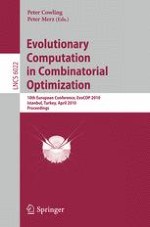2010 | Buch
Evolutionary Computation in Combinatorial Optimization
10th European Conference, EvoCOP 2010, Istanbul, Turkey, April 7-9, 2010. Proceedings
herausgegeben von: Peter Cowling, Peter Merz
Verlag: Springer Berlin Heidelberg
Buchreihe : Lecture Notes in Computer Science
